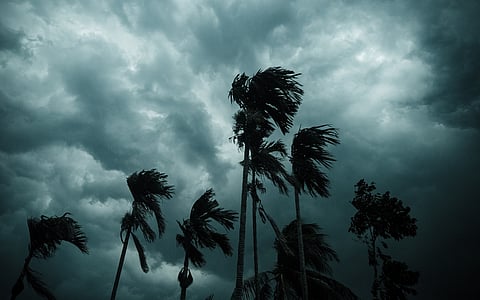

On the night of August 30, 2025, Chennai city experienced a spell of intense rain, especially between 10:00 pm and 12:00 am. The torrential rainfall in some areas can be categorised as cloud bursts, according to the official definitions of the India Meteorological Department (IMD) and the World Meteorological Organization (WMO), according to the Regional Meteorological Centre (RMC) of the IMD in Chennai.
The IMD defines a cloud burst as the occurrence of 100 mm of rainfall in one hour over a small area of 20-30 square km. There were five reports of rainfall above 100 mm/hr in Chennai on August 30.
Between 10 pm and 11 pm the Manali area in Chennai received 106.2 mm of rainfall, according to data from the RMC, Chennai. Between 11 pm and 12 am, Wimco nagar recorded 157.2 mm, Korattur recorded 137.1 mm, Manali again recorded 126.6 mm and 103.2 mm was recorded in New Manali town during the same period.
RMC, Chennai stated that “as such, cloud burst occurred over Manali area and neighbourhood with Zone 2, Manali (Div 19) recording 106.2 mm during 22-23 hrs IST and 126.6 mm during 23-24 hrs IST.” Ennore also recorded 88.5 mm rainfall between 10:45 pm and 11:45 pm, which was close to a cloud burst rainfall.
Cloud burst events in the plains are extremely rare as the existence of hills or mountains provides the conducive conditions of orographic lift required for such intense rains to occur. Orographic lift is when the moisture laden winds travel upwards a hill or mountain slope leading to rapid condensation and heavy rainfall in a small area.
“Cloudbursts are not a unique type of raincloud, but rather a result of highly localised convective precipitation, often triggered by orographic lifting—when moist air masses are forced upward by steep Himalayan terrain, cooling and condensing rapidly,” according to Amita Bhaduri on the India Water Portal.
In India, cloud bursts are more common in the Himalayan and Western Ghats regions where orographic lift is available. Most of the studies on cloud bursts are also focused on these regions. Not much research is available for cloud bursts in the plains.
The area in Chennai where the cloud burst rainfall occurred is at an elevation of a few metres above mean sea level and very close to the coast. There are no hills or mountains anywhere close by. This makes the rainfall event the rarest of rare and puts into focus the potential of global warming induced rainfall events to push the boundaries of human knowledge about the science of warming and consequent climate change.